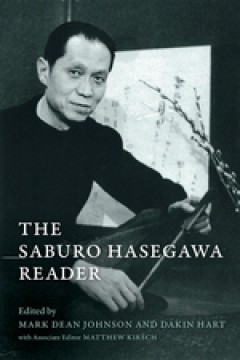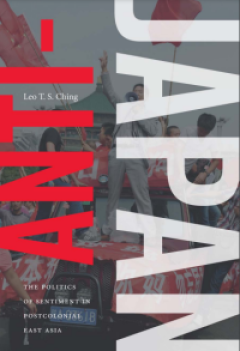Ditapis dengan

THE SABURO HASEGAWA READER
Published on the occasion of the 2019 exhibition “Changing and Unchanging Things: Noguchi and Hasegawa in Postwar Japan,” The Saburo Hasegawa Reader encompasses a selection of writings by the Japanese artist, theorist, essayist, teacher, and curator Saburo Hasegawa (1908–1957), translated into English for the first time. Credited with introducing abstract art to Japan in the 1930s, Hasega…
- Edisi
- -
- ISBN/ISSN
- 9780520970922
- Deskripsi Fisik
- xxv. :ill. ;166 p.
- Judul Seri
- -
- No. Panggil
- 709.2. THE j

ANTI-JAPAN
In August 2017, four Chinese men dressed in Second World War Japanese military uniforms posed at the Continental Bank Warehouse in Shanghai where Chinese troops fought the Japanese imperial army in 1937. In February 2018, two different men, also in Japanese military garb, struck various poses in front of a memorial site on Zijin Mountain in Nanjing where Chinese civilians were murdered by th…
- Edisi
- -
- ISBN/ISSN
- 9781478001881
- Deskripsi Fisik
- 176p
- Judul Seri
- -
- No. Panggil
- 303.4825052 CHI a

JAPAN'S BOOK DONATION TO THE UNIVERSITY OF LOUVAIN :JAPANESE CULTURAL IDENTIT…
Companion to the exhibition “Japan’s Book Donation to the University of Louvain”, KU Leuven University Library, 28 October 2022 - 15 January 2023 With more than 3,000 titles in almost 14,000 volumes, the 1920s Japanese book donation to the University of Leuven/Louvain constitutes an invaluable time capsule of Japan’s pre-modern culture in all its diversity and richness. A century on, th…
- Edisi
- -
- ISBN/ISSN
- 9789461663283
- Deskripsi Fisik
- -
- Judul Seri
- -
- No. Panggil
- 950 JAP

THE INVASION OF THE SOUTH:ARMY AIR FORCE OPERATIONS, AND THE INVASION OF NORT…
Between 1966 and 1980, the War History Office of the National Defense College of Japan (now the Center for Military History of the National Institute for Defense Studies) published the 102-volume Senshi Sōsho (War History Series). The present book completes the trilogy of English translations of the sections in the Senshi Sōsho series on the Japanese operations against the former Dutch East I…
- Edisi
- -
- ISBN/ISSN
- 9789400604100
- Deskripsi Fisik
- 519p
- Judul Seri
- -
- No. Panggil
- 940.544952 REM

RADIOLOGICAL ISSUES FOR FUKUSHIMA'S REVITALIZED FUTURE
This book overviews environmental issues 4 years after the Fukushima nuclear accident, covering a wide range of areas related to radiation and radioactivity. The topics discussed are necessary to make clear the relationship between the results of research and Fukushima’s revitalized future. The chapters are divided into four parts: Part 1 presents the identification of radionuclides in soil a…
- Edisi
- -
- ISBN/ISSN
- 9784431558484
- Deskripsi Fisik
- xiii, 232p. : ill.
- Judul Seri
- -
- No. Panggil
- 363.738 RAD r

THE JAPANESE AUTOMOTIVE INDUSTRY:MODEL AND CHALLENGE FOR THE FUTURE?
As the University of Michigan Center for Japanese Studies reflected on the deteriorating position of the domestic auto industry in the fall of 1980, and the strong competitive threat being posed by the Japanese automakers, we were struck by the extraordinary low quality of the public discussion of these critical issues. The national importance of the issues seemed only matched by the superficia…
- Edisi
- -
- ISBN/ISSN
- 9780472902033
- Deskripsi Fisik
- ix, 147 p. ; 23 cm.
- Judul Seri
- -
- No. Panggil
- 338.4762920952 JAP j
 Karya Umum
Karya Umum  Filsafat
Filsafat  Agama
Agama  Ilmu-ilmu Sosial
Ilmu-ilmu Sosial  Bahasa
Bahasa  Ilmu-ilmu Murni
Ilmu-ilmu Murni  Ilmu-ilmu Terapan
Ilmu-ilmu Terapan  Kesenian, Hiburan, dan Olahraga
Kesenian, Hiburan, dan Olahraga  Kesusastraan
Kesusastraan  Geografi dan Sejarah
Geografi dan Sejarah